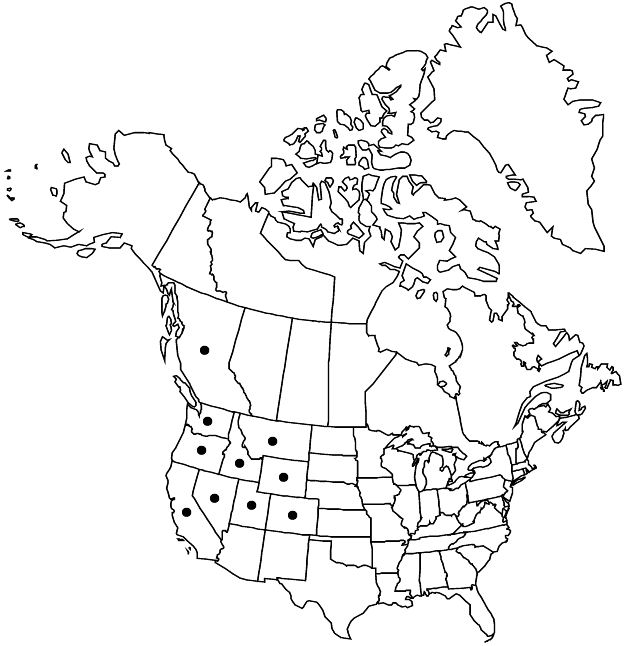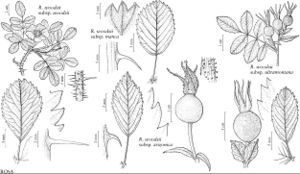Rosa woodsii subsp. ultramontana
Canad. J. Bot. 56: 189. 1978.
Shrubs, usually 10–30(–50) dm. Stems openly branched; prickles absent or sparse on distal stems and branches, infrastipular prickles usually erect, usually subulate, 2–7 mm, internodal usually sparse or absent. Terminal leaflets ovate to elliptic, sometimes obovate, (10–)20–32(–40) mm. Inflorescences (1–)3–10(–25)-flowered. Sepals: abaxial surfaces eglandular, rarely stipitate-glandular. 2n = 14.
Phenology: Flowering May–Jul.
Habitat: Rocky banks and hillsides, steep hillsides, shady riparian banks, wooded stream bottoms, roadsides, fence rows, sagebrush hills
Elevation: 150–2500 m
Distribution

B.C., Calif., Colo., Idaho, Mont., Nev., Oreg., Utah, Wash., Wyo.
Discussion
Subspecies ultramontana occurs from the northern Rocky Mountains and Wasatch Front across the northern Great Basin and Columbia Plateau to the Sierra-Cascade axis, most often in full sun near water. Plants are relatively tall and open, generally with sparse, erect prickles.
Achene extracts of subsp. ultramontana exhibited strong antioxidant and antimicrobial activities, which were greater than such activities from Rosa nutkana hip extracts. Extracts from both were strongly active, the first roses from British Columbia known to express such activities (O. Yi et al. 2007).
Selected References
None.
